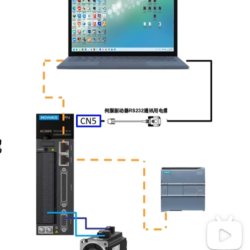Over the past year, significant reforms to the patent system have continued to transform the patent landscape in China, making it a more appealing hub for innovation and enhancing the value of Chinese patents. As of January 2024, new Patent Law Implementation Rules and Patent Examination Guidelines have come into effect, reflecting these developments. Below is a summary of the most notable changes.
New Implementing Regulations of China Patent Law
The revised Chinese Patent Law, which took effect on June 1, 2021, has now been complemented by the official implementation of the Patent Law Implementation Rules as of January 20, 2024. Key revisions focus on several areas:
1. Enhancing the Patent Application System
The updated regulations aim to streamline the patent application process for applicants and innovative entities. This includes improvements to e-filing regulations, clearer requirements for partial design patents, and adjustments to the grace period for maintaining novelty. Notable changes include:
Deadline Calculation for E-Filing: Official communications delivered electronically will be considered received on the date they enter the recognized electronic system.
Partial Designs: Applications for partial designs must include a complete view of the product, with the protected and disclaimed parts clearly indicated.
Grace Period Conditions: An invention will not lose its novelty if it was publicly disclosed at an approved academic or technical meeting within six months prior to the application date.
2. Improving Patent Examination Quality
The revisions also aim to enhance the quality of patent examinations by regulating abnormal applications and refining the review systems for utility models and designs. Key changes include:
Good Faith Principle**: This principle can now serve as a basis for rejecting applications that do not stem from genuine innovation.
Deferred Examination**: Applicants can request deferred examination for varying periods depending on the type of application.
3. Strengthening Administrative Protection of Patents
The reforms also focus on bolstering administrative protections for patents, including refining the patent term compensation system and clarifying standards for patent infringement disputes.
4. Enhancing Patent Public Services
The new regulations aim to improve public services related to patents and facilitate the transformation and application of patents, including handling significant patent infringement disputes.
5. Aligning with the Hague Agreement
A new chapter has been added to strengthen the connection with the Hague Agreement, clarifying procedures for international design applications.
New Patent Examination Guidelines
To align with the revised Patent Law and its implementing rules, the Patent Examination Guidelines have undergone comprehensive revisions. Key aspects include:
– Modifications related to electronic applications and requirements for partial design patents.
– Optimized examination rules to enhance clarity and efficiency.
– Adaptations to accommodate new business models and technological advancements.
**Patent Application Trends in China**
China’s patent system encompasses three types of patents: invention patents (20-year term), utility models (10-year term), and design patents (15-year term for applications filed after June 1, 2021). Despite global economic challenges during the COVID-19 pandemic, patent filings in China have continued to grow, with the CNIPA reporting stable increases in granted invention patents from both domestic and foreign applicants.
**Annual Report of the IP Court of the Supreme People’s Court of China**
The IP Court of the Supreme People’s Court has played a pivotal role in establishing a specialized patent trial system in China. In 2023, there was a notable increase in patent civil cases accepted, along with a significant rise in punitive damages awarded. The court emphasizes equal protection for both Chinese and foreign parties, fostering a fair and competitive business environment.
These reforms and developments reflect China’s commitment to enhancing its patent system, promoting innovation, and ensuring robust protection for intellectual property rights.
In a recent infringement case concerning a ‘sports mechanism,’ Chinese courts have demonstrated a strong commitment to enhancing intellectual property protection by awarding punitive damages exceeding 12 million yuan to foreign rights holders. This decision reflects the courts’ dedication to safeguarding the interests of both Chinese and foreign entities.
The updated patent law has raised the maximum statutory compensation from 1 million yuan to 5 million yuan. The Intellectual Property Court of the Supreme People’s Court (SPC) is firmly committed to increasing overall compensation for infringement cases, rigorously enforcing the punitive damages system, and imposing strict penalties for malicious infringement activities. From 2021 to 2023, the average compensation awarded in second-instance invention patent infringement cases handled by the IP Court reached 2.727 million yuan.
In a notable case involving the infringement of an invention patent related to ‘melamine’ and technical secrets, the initial judgment was set at 218 million yuan. However, the parties involved reached a comprehensive settlement during the execution proceedings, resulting in the rights holder receiving a remarkable 658 million yuan in compensation. This amount has established a new record for the highest compensation awarded for intellectual property rights protection in China.

